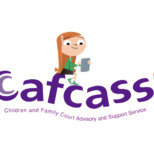
Guide to direct access arrangements for children
12th October 2023 by Damian Summerscales
Being separated from your child can be heart-wrenching, and yet some parents have to overcome some significant hurdles to be able to spend time with their children in a way that many families take for granted.
Direct access is the ultimate goal, and in this article we will focus on the different types of direct access, and what steps can be taken to finalise any agreement or seek a way forward if agreement cannot be reached.
This follows on from our articles which looked at the welfare considerations when thinking how to meet your child’s needs in agreeing access arrangements, and the reasons why indirect access may occur and the different forms it can take.
‘Direct access means any contact a parent has with a child that is face to face. It can be in many different formats and can include restrictions if necessary to meet the child’s welfare needs,’ says Damian Summerscales, Partner in the family team with Laceys Solicitors.
Why have direct access?
Before we consider the different types of direct access arrangements, we will take a quick look at the reasons to have direct access.
Direct access is often what parents prefer to have with their children, and is normally what will be in the best interests of a child. It is the basis of a natural relationship where a parent and child see each other face to face and spend time together. If the access is of a good quality, it allows attachment to build between a child and parent and will promote the child’s wellbeing.
The quality of contact is not about what activities are undertaken, but more about the bond and connection between the parent and child. For example, if there is a young toddler, a higher quality contact may involve the parent engaging with the child by interacting at their level and getting onto the floor to play games. A lower quality contact may involve the parent being present in the same room as a child, but not engaging with a child for example by being on their phone.
If the time together is not high quality, it is still likely to be beneficial to a child provided there are no safeguarding concerns that would place the child at risk.
What type of direct access?
The different types of direct access provide different levels of safeguarding for the child:
- Supervised contact – if you have been having indirect access, then sometimes the first step to direct access will be supervised contact. This is usually only if there remains some concerns that the child will be at risk. This can be supervised by a friend or family, or sometimes it may need to be supervised by social services. This is typically only a temporary measure to monitor contact before it can move to a more natural arrangement.
- Contact centre – this is a centre staffed by volunteers or paid staff with childcare experience that is open for a few hours each week and can accommodate a number of different children and parents at the same time. It is not supervised contact, but does occur in a safe environment. It can also be used as a neutral venue for contact handover if there have been past issues between parents. Contact centres are not usually a long-term solution, and typically one is only used as a step towards a more natural contact.
- Contact in the community – this can be at a soft play, park, swimming pool or cinema, for example. It is deemed to be a neutral venue for contact, and allows a relationship to build between a parent and child while the child participates in a fun activity. This often occurs where one parent has raised issues about the home environment of the other parent, for example, concerns about other people that live in the home, or that the child may be exposed to inappropriate material in the home such as drugs.
- Contact in the home – this is typically the most natural type of direct access and occurs in the parent’s own home. A neutral handover location can be agreed, or the parents can agree to transport the child between their homes directly. This type of contact can be for a number of hours, or it can be for an overnight stay. If it is to include overnight stays then it is important that the child has an appropriate place to sleep.
- Holidays – direct contact can also include taking the child away on holiday, which (subject to any court orders) could be abroad or within the UK. It is wise to provide the other parents with details of where you will be staying and how you will be travelling. It is also sensible if the child is away for a longer period of time than usual, that both parents agree how and when the absent parent will be contacted and if they will, for example, be able to have video calls during the holiday.
Restrictions
If there are particular concerns, restrictions can be put in place – such as restricting the venue direct access can occur in, or restricting other people who can be present.
How we can help
If you need advice on direct access arrangements for your children please contact either the Family Law team on 01202 377800 or email d.summerscales@laceyssolicitors.co.uk or the Family Mediation Team on 01202 377993 or email g.burden@laceyssolicitors.co.uk
This article is for general information only and does not constitute legal or professional advice. Please note that the law may have changed since this article was published.



